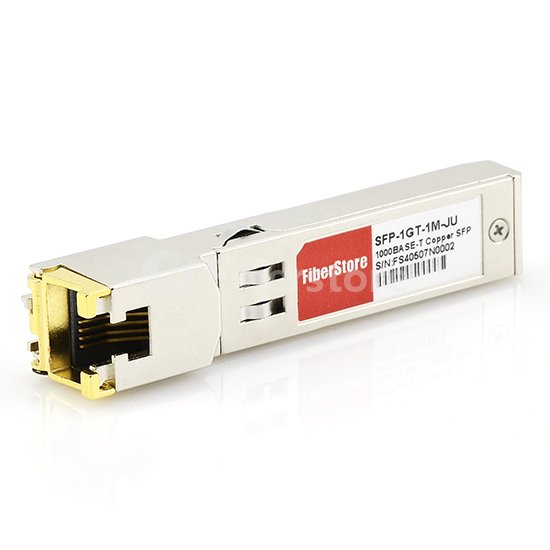3rd-party fiber optic transceivers has now been perferable and widely used as optical transmission solutions. High quality and high performance compatible 3rd-party optical transceivers can meet your needs for your applications, such as Intel E10GSFPSR compatible 1000BASE-SX and 10GBASE-SR SFP+ transceiver, or Finisar Intel FTLX8571D3BCV-IT compatible 10GBASE-SR and 1000BASE-SX SFP+ transceiver, which are with high performance and can save you money at the same time. To ensure the compatibility of 3rd-party optical transceivers, they need to be carefully and thoroughly tested and verified. This post will talk about several testing and verification methods of 3rd-party optical transceivers.
Popularity of 3rd-Party Optical Transceivers
Nowadays, more and more companies or users prefer to choose 3rd-party optical transceivers. The increasing market demands for 3rd-party optical transceivers illustrate this point. An officially-branded transceiver and a 3rd-party plug has actually no big difference. As long as optical transceivers meet the same international standards, there is no question of compatibility between fiber optic transceiver modules. Most "third party" optical transceivers are made and assembled in exactly the same plants assembling officially-branded transceivers. The primary benefit of using third party optical transceivers is the cost savings. The difference in price often exceeds 80 percent or more. Cost of optical transceivers is a significant part of the total system expenditure. It is important for designers to minimize the cost. Significant savings brought by third party optical transceivers can enable designers to re-invest and make their designs better. This is why 3rd-party optical transceivers have been increasingly popular with users. The following picture shows an HP JD089B compatible 1000BASE-T SFP copper transceiver. It is fully compatible with HP devices.
Methods of Testing and Verification
Before inserting a 3rd-party optical transceiver module into your network, it is very necessary to test and verify that the 3rd-party optical transceiver module can function well and will not do any damage to your network. There are several methods to test and verify 3rd-party optical transceiver modules, but it is not always as easy as it seems. Here is what you need to know if you are considering testing and verifying 3rd-party optical transceiver modules.
1. Test Bit-Error Ratio: You must always operate within an acceptable bit-error ratio (BER) in a digital communication system. Whether you are testing an interface bus in a laptop computer or a telecommunications link, you have to follow this rule. Generally, in a digital communication system, it should be no more than one error in 1012 bits. If the desired BER is not reached, you should check the transmitter, or the receiver, or both.
2. Test Minimal Power Level and Jitter Level: A receiver needs to achieve a minimum power level to achieve the BER target. The level achieved will dictate the minimum allowed output power. Likewise, if the receiver can only achieve a certain level of jitter, this will be used to define the maximum amount of jitter that can be received from the transmitter without malfunctioning. Transmitter parameters may specify the wavelength and the output waveform shape.
3. Test Interoperability with a Worst-Case Transmitter: Network specifications should determine whether a worst-case transmitter will interoperate with a receiver. Transmitters should also have a signal sufficient enough to support the worst-case transceiver.
4. Verify Compliance with Multiple Samples: Several waveform samples are required to remain compliant. Sometimes, a larger population of waveform samples will provide an accurate assessment of transmitter performance. The oscilloscope will collect more data, but more samples will contribute to the increase of likelihood of mask violations. The results are either pass or fail, so it is important to acquire as many samples as possible to get an accurate assessment, which requires aligning the mask to the waveform.
5. Understand Instrumentation Effects: Keep in mind that any transceiver test can be skewed due to the oscilloscope's frequency response. You can achieve consistent results with a reference receiver. Most tests will use a fourth-order Bessel filter response, and the 3-dB bandwidth is at 75 percent of the data rate.
6. Consider Expanding Your Eye Mask: When you expand the eye mask, you can verify a compliant hit ratio. Only a small number of samples are capable of intersecting a mask. Most oscilloscopes will include a modified version of the classic eye-mask test. Once you have the desired number of samples, you can determine how far you can expand the mask. Each test will determine how far you can expand the mask before the mask hits to the total waveform exceeds the ratio.
Conclusion
Several methods to test and verify third-party optical transceiver modules are introduced above. Hope that they can help you avoid pitfalls, and assist you to test and verify your 3rd-party optical transceivers with ease. It is a necessary step to test and verify third-party optical transceiver modules before using them in a network.



